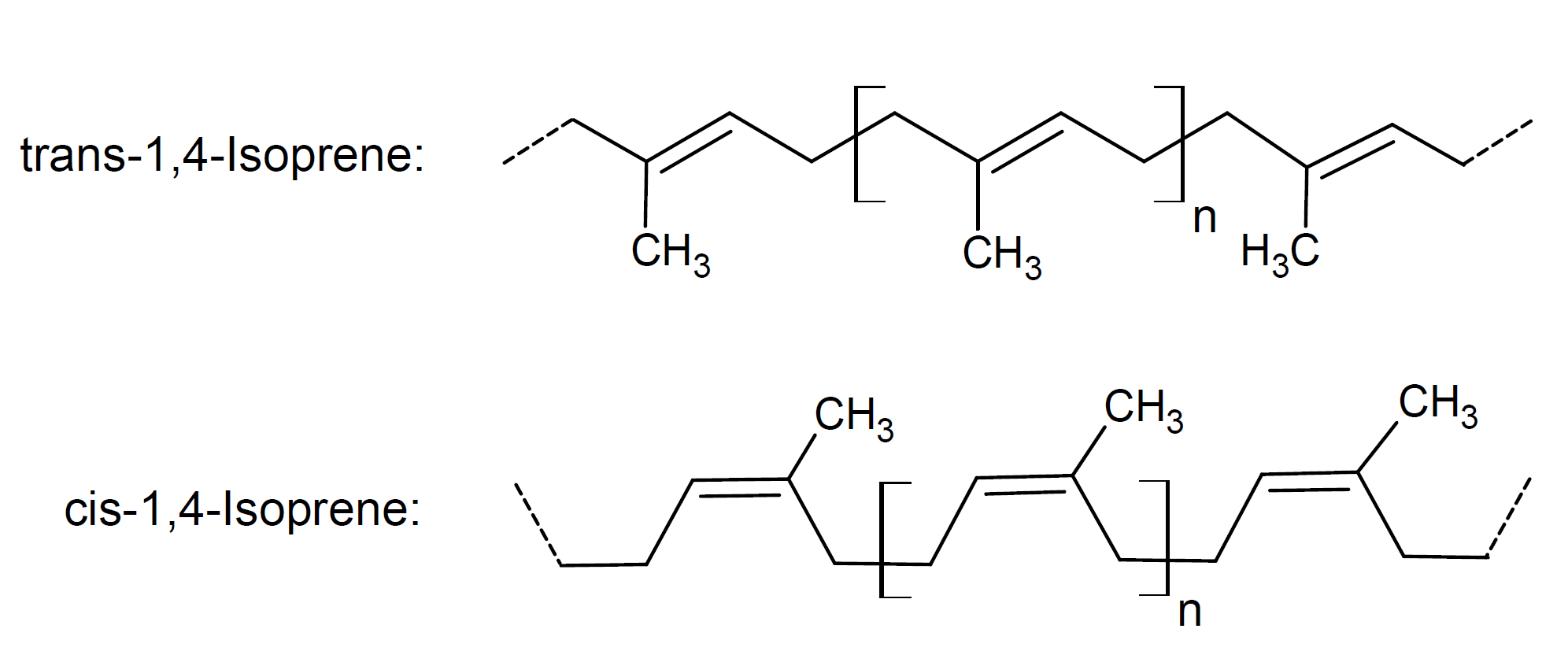Isoprene Rubber
Properties and Applications
Polyisoprene (IR/NR) is an inexpensive and widely-used commercial rubber. It is either harvested in the form of latex from rubber trees (NR) or synthetically produced by polymerization of 1-methyl-1,3-butadiene (IR). Natural rubber is also known as India rubber or caoutchouc. It is the only non-synthetic rubber and has been in commercial use since the beginning of the 20th century.
Natural and sythetic rubber differ in the microstructure; natural rubber consist almost entirely of the cis-1,4 polymer whereas synthetic isoprene is a blend of cis-1,4, trans-1,4 and 3,4 vinyl polymer. The amount of cis-1,4 in natural rubber is typically in the range of 90 to 98 %. An increase in cis-1,4 usually lowers the glass transition temperature, increases the crystallinity, and improves the mechanical strength. Thus, the tensile strength and tear resistance of synthetic polyisoprene are usually somewhat lower than those of natural rubber.

Vulcanized natural and synthetic polyisoprene have good fatigue resistance and are, therefore,
an excellent choice for dynamic applications at low and ambient temperatures.
Their elasticity, compression set, creep and abrasion resistance is excellent over
their working temperature range of approximately -50°C to +100°C (-60°F to 215°F).
However, like most other polydiene elastomers, isoprene and natural rubbers
have poor resistance to ozone, gasoline and many organic solvents.
Due to its outstanding mechanical properties and low cost,
isoprene rubber is the preferred material for many engineering applications. Typical uses include anti-vibration mounts, drive couplings,
tires, springs, bearings, and adhesives. The largest portion of produced IR and NR is used for tires. It is usualy blended with SBR and PBD rubber
to achieve superior performance.